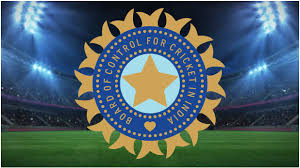After the depressing loss in the final test at Edgbaston, even the die-hard fan would not have envisaged the outcome of the limited overs series. Especially, when you consider the fact that England are the trendsetters in this format at the moment and to have won against such a team twice, is a creditable achievement. However, despite the win, there is still some troublesome spots for India white ball cricket. What did we learn about India after the England tour?
A pair of 2-1 wins in T20s and later in ODIs against England in England is an exceptional achievement. In T20, India sewn up the series even before it moved to the 3rd T20 which by the way, with a bit of support, Surya would have won. In ODI, it went upto the last game to decide the series winners.
Bowlers had a role to play
This series was unlike any that was witnessed in England over the last several years. Scores in the range of 350 was quite common. In keeping with England’s belligerent approach, pitches helped stroke making and the batsmen were able to hit through the line. It was in England where England bumped up a score of 484 and that too against a good Australian bowling. However, this series proved to be the anti-thesis of all the games that went by earlier. Leave alone 350, even 300 proved to be difficult to achieve. Whether it was because of the pitch or because of some good bowling from both the sides, is open to interpretation.
The point is, if this is how ODI and T20 games are to be played in the future, it really is a welcome change. Far too long, bowlers were not required to do anything other than run and hurl the ball. If other countries can follow England, white ball cricket will return to the saner days of 80s and 90s.
Hardik Pandya’s performances were the real gain
The highlight of the entire series was the form of Hardik Pandya. He played a stellar role with the bat and with the ball. The fact that he was able to bowl his quota of overs was something that was very much needed for the balance of the side. When in song, there are just a handful of clean hitters like Pandya. In the final ODI, he showed the other side of his batting ability when he alongwith Pant fashioned a famous win with a big partnership after the big guns were dismissed. Previous Indian teams would have easily given up much earlier. If Pandya can remain injury free, he can even comeback into the Indian test team as the expense of Shardul.
Now, that will be one excellent addition with the batting extending right till the tail. It all depends on whether Pandya wants to play Test cricket. I still remember his interview all those years ago when he said that he wanted to be the Indian Kallis. Tall claims by someone who was just starting his career. Is he retaining the same passion? Test cricket is much tougher. He will be required to bowl lot more overs and at decent pace. Let us hope for the sake of Indian cricket that he wants to contribute and even if he achieves half of what Kallis has, he would have served Indian cricket well.
Rishabh Pant is not a middle order batsman
I have said this earlier and I will say this again. Pant is not a number 4 batsman. Yes, he has just played a match-winning innings with a brilliant hundred. He restrained himself well and paced his innings beautifully. However, I will still not play him at number 4. He can be really good at number 6 where all he needs to do is play shots. With an able batsman in Surya Yadav, I do not think there is any necessity for Pant to be promoted. Kohli and Shastri did this mistake. Rohit and Dravid are continuing with the same. This is as far is ODI is concerned.
As for T20, with the abundant talent, I do not think that Pant should bat any higher than number 6. That is, if at all he is included in the side at the expense of Ishan Kishan or the perennial comeback man, Dinesh Karthik.
Indian batting in ODI
Indian batting, especially in ODI, is suddenly looking shaky. It showed in the 2nd ODI when they failed to chase a modest target. Ofcourse, they chased a bigger target in the 3rd ODI but that was down to a pair of excellent innings. With Rohit Sharma, Dhawan and Kohli not hitting their strides as often as it is ideally required, the middle order was exposed. All of them are quality batsmen in ODIs. They still remain that but against stiffer targets, if the top three fails to give a good start, it will not be easy for the rest of the batsman. Surya is relatively inexperienced at the highest level and the middle order is packed with all-rounders.
Moreover, the bottom four does not inspire any confidence whatsoever with the bat which makes the job of the middle-order even more tough. India needs a good bowler who will be able to hold with the bat. Kumar is the obvious choice or the batting abilities of Bumrah and Shami, if any, he must explored even further.
The struggle of the top 3 and the pathetic batting of the bottom 4 essentially means that India will never be in a position to play aggressively right from the start. It is very much the norm these days.
The Ravindra Jadeja conundrum
Jadeja played the entire series as a specialist batsman. It was pretty obvious. He was the 6th choice bowler in all the games and did not even get to bowl in the first ODI. Having said that, it was really a mystery to see him walk-in after Pant and Pandya. If I were in his shoes, I will feel aggrieved. Being a batsman, I would have expected to bat in the top 5 rather than the bottom 5. He is actually wasted at low down the order. In the 2nd and 3rd ODIs, he could have brought some stability at the top of the order from where it could have been easier for Pant and Pandya.
Wrapping up what did we learn about India after the England tour?
There is lot of work needs to be done before the T20 and ODI World Cups. The form of the top order is a major concern with Kohli being the key.
Other England tour related blogs



